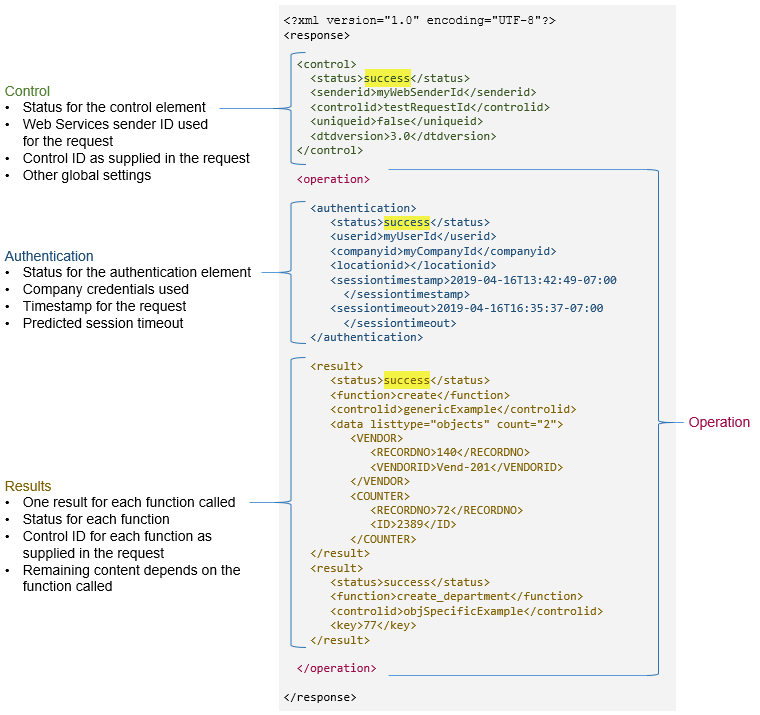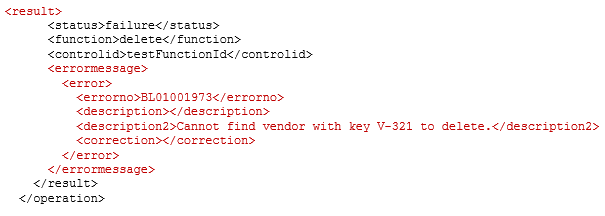XML Responses
When working with Web Services, responses are provided in XML.
The high level structure of a response is very similar to that of a request—both have control and operation elements organizing the main content.
The following example shows the basic structure of a response.

The control, operation, and authentication elements are parallel elements that reflect the contents of the request. The following descriptions highlight items that are unique to a response.
status
Indicates status with either success or failure. An error message is provided in case of a failure (see below).
Note that there are three levels for status messages. If the control and authentication blocks succeed, then results are available. Individual function calls can succeed or fail independently (unless the operation element in the request had the transaction attribute set to true).
result
Depending on the type of function you requested, the structure of the result will vary. For example, when using the create function for multiple objects (as shown in the figure), the result provides a data element with listtype and count attributes as well as child elements representing each object. Other functions, such as delete, return only a status of success or errors. See the reference documentation for the function of interest for specifics about the return values.
errormessage
For every error triggered during request execution, the XML response document provides an errormessage element. The error can occur at the control level, in which case no operation is executed. Errors can also occur for individual functions. For example, the following shows an error for a problem at the function level:

What’s next?
- Learn about handling errors.